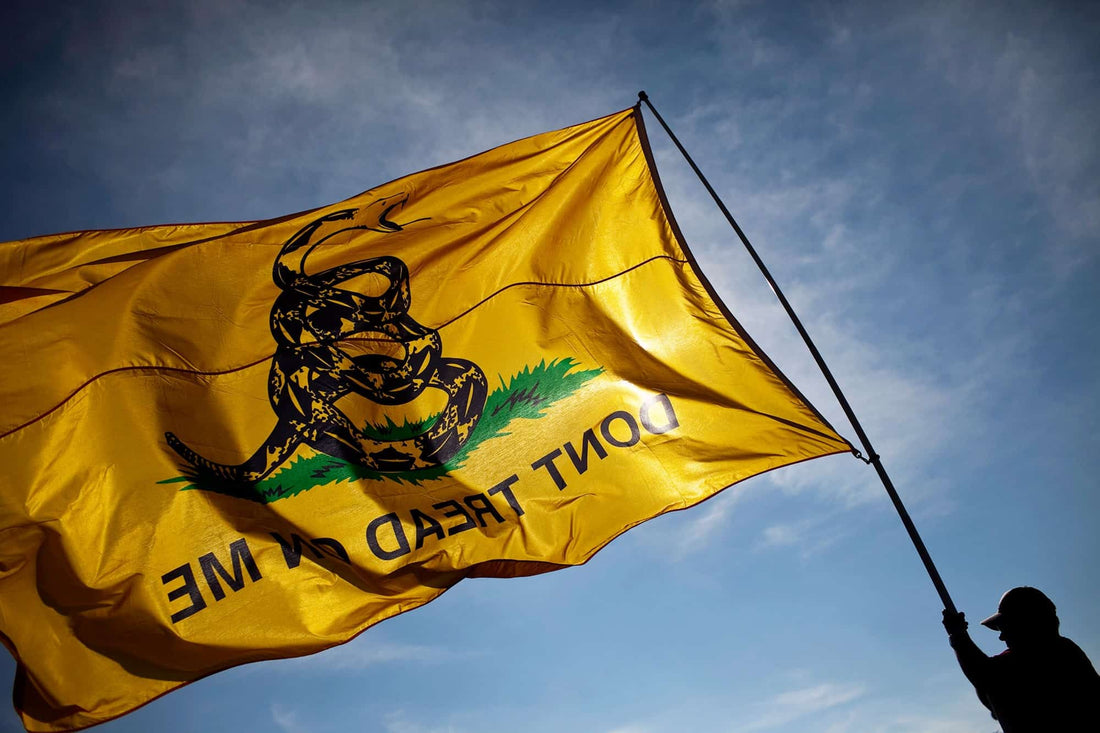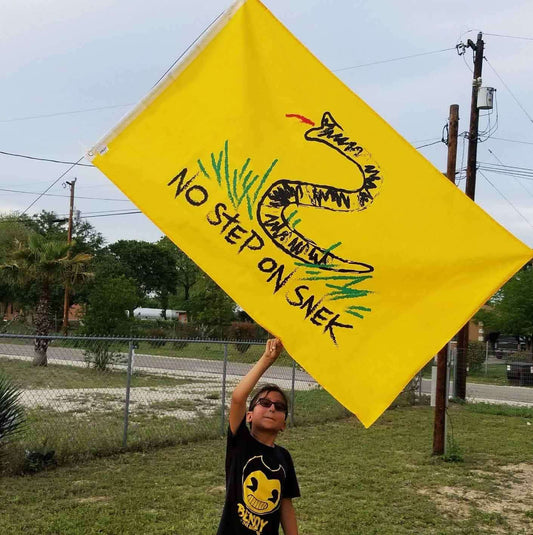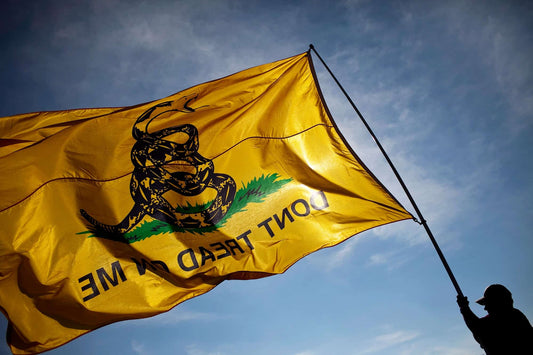
The History of the Don't Tread On Me Flag

Origins of the Don't Tread on Me Flag
Back in the days of the American Revolution, amid battles and budding nationalism, the Gadsden flag was born. It wasn’t conjured out of thin air, though. Its inception had roots in the urgent need for a new identity—an American identity.

The Creator of the Gadsden Flag
The year was 1775. The Continental Navy desperately needed a symbol of defiance and unity. Enter the Gadsden Flag. The design was designed by Colonel Christopher Gadsden from South Carolina, and was first unfurled on the colonial ship Alfred in the Chesapeake Bay.
His presentation of the rattlesnake flag was recorded in the South Carolina congressional journals on February 9, 1776:
Col. Gadsden presented to the Congress an elegant standard, such as is to be used by the commander in chief of the American Navy; being a yellow field, with a lively representation of a rattlesnake in the middle in the attitude of going to strike and these words underneath, "Dont tread on me."
Bam! The rattlesnake was ready to strike.

The Symbolism of the Gadsden Flag
Why a rattlesnake, you ask? Rattlesnakes weren’t a random choice. They were native to America, resilient creatures that strike only in defense—symbolically perfect for the colonies. The phrase "Don't Tread on Me" was a straightforward warning—an expression of the settlers' desire for self-preservation and willingness to defend their rights. Think of it like early America saying, "Mess with us, and you'll regret it."

The Flag During the Revolutionary War: Rallying Cry for Resistance
When the colonists saw that flag flying, it wasn't just fabric fluttering in the wind—it was a call to arms against British tyranny. It stirred up feelings of unity and resistance, fueling the American resolve to break free from the chains of oppression.
Cultural Impact in Revolutionary America
Soon, this rattlesnake-laden banner wasn't just in the hands of the Navy. Military units across the colonies adopted it, proud to stand under its symbol. It helped build an American identity at a time when such an identity was barely a whisper. It was more than a flag; it was the nascent spirit of a nation.

Modern Usage and Interpretations
Fast forward a few centuries, and the flag’s meaning has evolved, sometimes sparking debates on its interpretation and use.
From Revolutionary Symbol to Political Icon
Today, the Gadsden flag appears in surprising places: protests, political rallies, bumper stickers, and even license plates in 12 states: Alabama, Arizona, Florida, Kansas, Maryland, Missouri, Montana, Oklahoma, South Carolina, Tennessee, Texas, and Virginia.
Its message of freedom resonates far beyond the American revolution, expanding to advocate for everything from free speech to personal liberties. It’s a testament to its timeless appeal.

Controversies and Misunderstandings
In recent years, the flag has been embroiled in controversies, with some viewing it as a symbol of extremism or intolerance. Misunderstandings have arisen, leading some to question what it truly represents. Context matters, and not everyone sees eye-to-eye on the Gadsden’s legacy.
Conclusion
In the tapestry of American history, the "Don't Tread on Me" flag is a vivid thread. It represents a defiant stand against oppression and the fight for personal freedoms. Though its meaning has shifted over time, its core—an unwillingness to be trampled—remains steadfast. Anywhere people strive for liberty and justice, this rattlesnake’s rattle will keep shaking, reminding us all of our shared past and enduring spirit.



